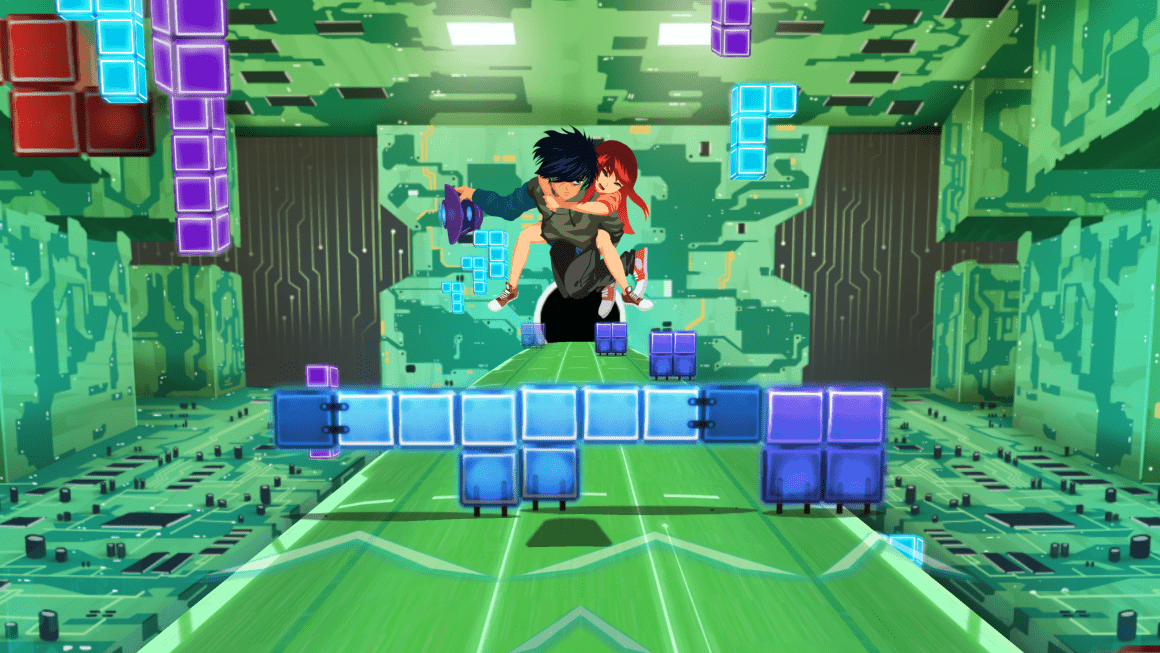Platform iOS, Android Genre Music
Developer Digixart Entertainment Publisher Digixart Entertainment
Platform Played iOS
Music games can often be a fun distraction. Whether it’s a simple rhythm-tapping game on mobile or jamming to classic hits with friends on Rock Band, a good jam session is welcoming from time to time.
Unfortunately, Lost in Harmony, an iOS and Android a rhythm game from the creator of Valiant Hearts, only manages to land a few of the right notes.
LiH follows Kaito and Aya, a pair of teens who are close with one another. Aya finds out she has been afflicted with a deadly disease, the specifics of which are never mentioned. Over the span of about a year, the player sees the story unfold via text messaging between Kaito and Aya.

That’s right. The only real interaction between the two characters are through barely-minute-long text conversations. As a result, I barely felt any connection to the characters, even during somber moments. The only true interaction players have with characters is hitting the send button on Kaito’s phone; it’s about as fun as it sounds.
Transitioning from chapter to chapter also follows a noticeably repetitive and ho-hum formula: Kaito and Aya text, and things are either fine or getting bad again; players select a dream; dream is completed; the camera zooms in on the calendar to show the passing time; camera zooms out to see Kaito laying down on his bed and pulling out his phone to text Aya; rinse and repeat.
Between texting sessions, players must complete dreams, which is where the meat of gameplay comes in. Kaito and Aya ride on a skateboard in an endless runner-like fashion to avoid numerous dangers in a variety of backdrops. This can range from anything such as bears attacking in the woods, avoiding literal email icons in a Tron-like cyberspace and the vastness of the cosmos.

Dreams are often the definition of sporadic, but as a game clearly tied to heavy themes, what goes on in the backdrop of each level is often detached to the story. And although they are more unrelating than not, the backgrounds often look pretty with the game’s cel-shaded aesthetics, especially in the later levels.
The controls have players holding down left or right on the touch screen, flicking up to jump or tapping on beats when prompted. The bottom half of the screen is used tp move while the top half is used to hit notes. This often led to unintentionally touching the wrong half of the screen or accidentally moving Kaito when tapping a beat. It also seems frustratingly impossible to avoid obstacles at times, but even more so with cumbersome controls.
The only time the gameplay has anything to do the rhythm is when notes need to be tapped. The rhythm of the music doesn’t necessarily inform the player know when to avoid things. Instead, arrows are used to signal when an object is about to hit, which doesn’t match the beat. What instead lines with the beat is the timing of the dangers. For example, if a bird is flying in from the right, it will swoop with precision to match with the song. It’s neat to see how well things are timed with the music, but rarely does it help the player.

Speaking of which, the soundtrack is one of LiH’s few finer points. Within the story’s hour-and-a-half span are numerous great remixes of classical songs such as Hall of the Mountain King, 7th Symphony, Sarabande and more.
Outside the mostly drab story, players can either create or play levels using any music on their device. I’m not sure how it’s legal to include such a feature, as virtually anything is on the table. I played levels with music ranging from Coldplay to Skyrim’s iconic theme from the community levels. However, with clunky and sometimes unresponsive controls, the only thing that makes going through levels worthwhile are the songs themselves. I probably had a dorky grin when I found a remix of the Mos Eisley cantina song from Star Wars.
I understand what developer Digixart is trying to convey in LiH’s story, that Kaito can save Aya in his dreams and feels helpless in the real world, and I’m sure it could hit a soft spot with anyone who has had a loved one affected with a terrible disease, but everything up to the final curtain feels like random ideas put on the drawing board without being fully fleshed out. With unwieldy gameplay and frustrating controls, characters I felt little connection with and rhythm mechanics that do not help the player and a brief story, there’s not much of a reason to play LiH other than its soundtrack and gazing at the eye-candy backgrounds in dreams.
The Good
- Great remixes to classical music
- Pretty visuals
The Bad
- Underwhelming story
- Little to no connection to be had with the characters
- Clunky and frustrating controls
- Contradicting rhythm gameplay
- Few reasons to return




